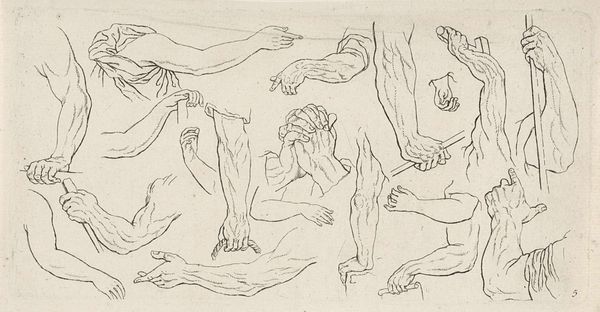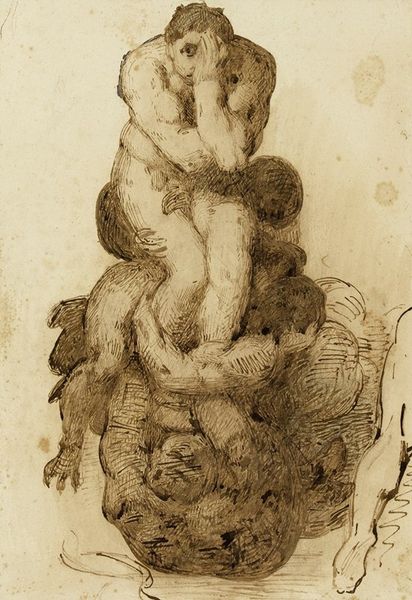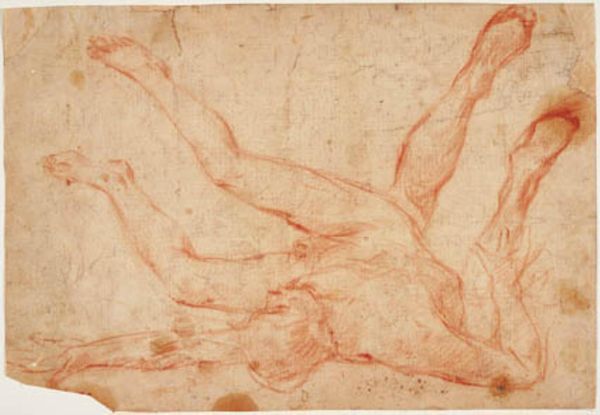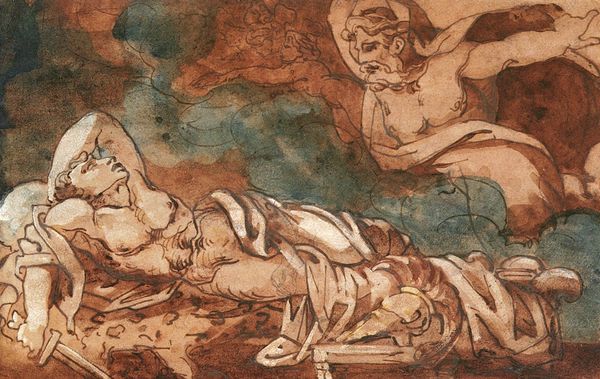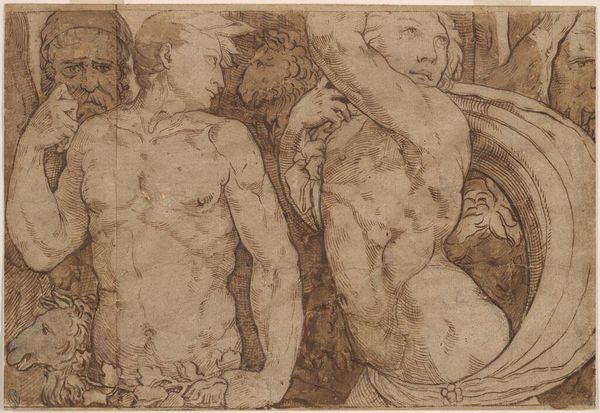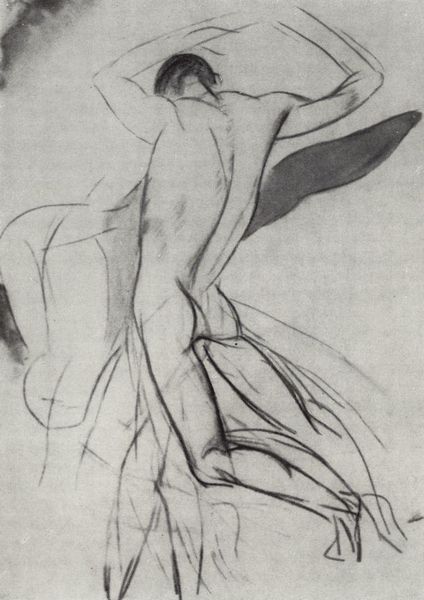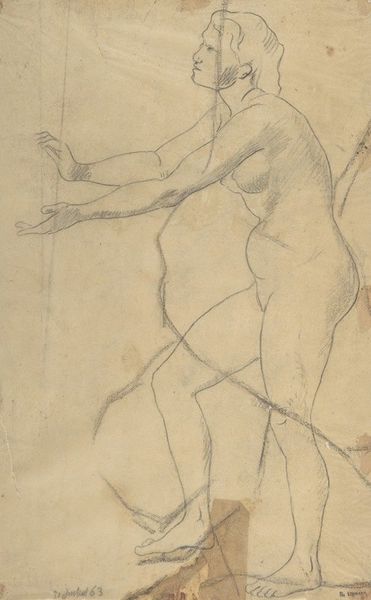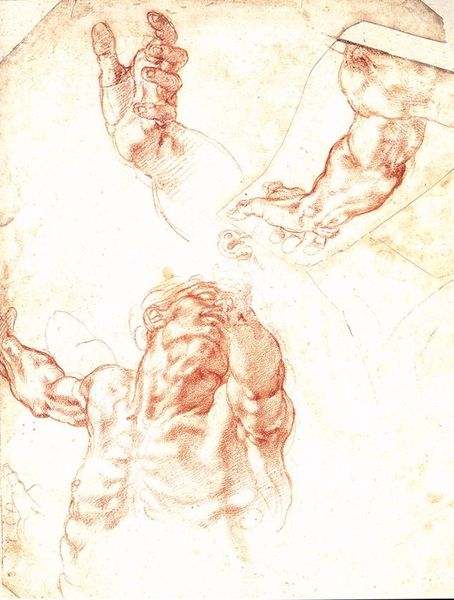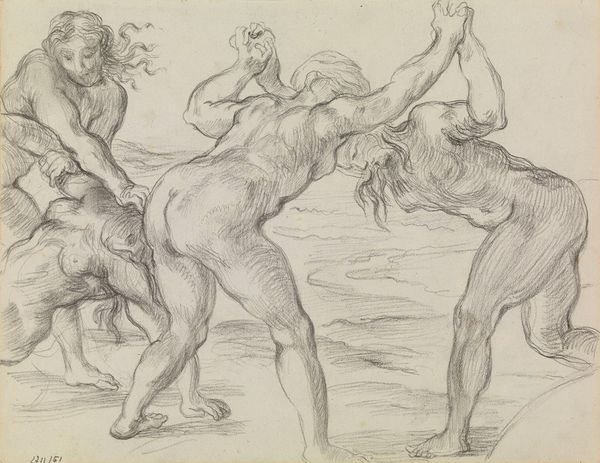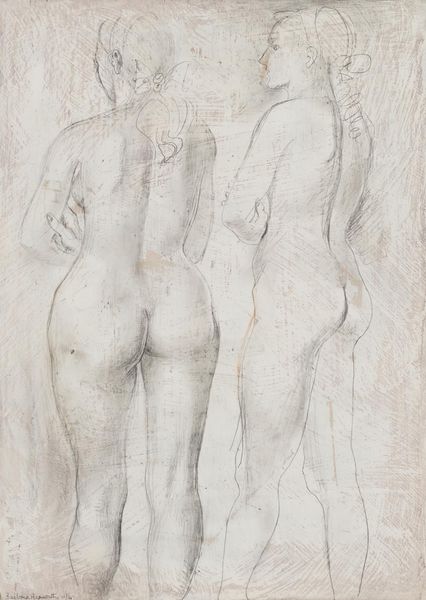
Copyright: Public domain US
Curator: Here we have Zinaida Serebriakova's "Seated Nude," created in 1917. What’s your first take on this piece? Editor: Raw, intimate. It looks like a quick study, but it really exposes the underlying form with powerful assurance through the artist’s use of line. The composition feels so immediate, and the monochrome charcoal highlights its focus on form over colour. Curator: Indeed. The linear structure here dictates the entire aesthetic. Notice how the repetition of forms – the tilt of the heads, the curves of the backs – create a rhythm that leads your eye across the surface. Serebriakova uses the texture of the charcoal itself to imply volume and light, structuring space within the composition. It transcends realism and engages with abstract principles of pattern and repetition. Editor: But is it really transcending? The choice of charcoal feels quite deliberate given its history of access and affordability; there's no obfuscation here. It connects this "high art" practice to accessible modes of representation through that very material. I'm also really drawn to the social realities influencing Serebriakova’s creative practice, namely that she sold fabrics as well as paintings after the Russian Revolution, underscoring the blurring lines between art, labor, and material necessity. This piece, with its emphasis on a figure study done with such accessible means, brings to mind the everyday struggles alongside the classical subject matter. Curator: That's interesting. While your point about access certainly resonates, I think the interplay between line, tone, and composition serves a deeper, perhaps more idealized vision of beauty. By reducing the figure to its barest essence, it elevates it beyond mere representation. Editor: Maybe, but I can’t help but read it in the context of that revolution and subsequent material constraints—how it might challenge those very notions of idealization when artistic resources themselves came at a premium. I am stuck with the evidence of a drawing rather than a completed oil work on canvas. Curator: A fair point. Ultimately, it is a fascinating piece, one that straddles representation and the fundamental formal qualities of drawing itself. Editor: Absolutely. A work whose form invites you to consider the conditions of its own making and circulation, questioning who has access to create, to represent, and consume art in the first place.
Comments
No comments
Be the first to comment and join the conversation on the ultimate creative platform.
